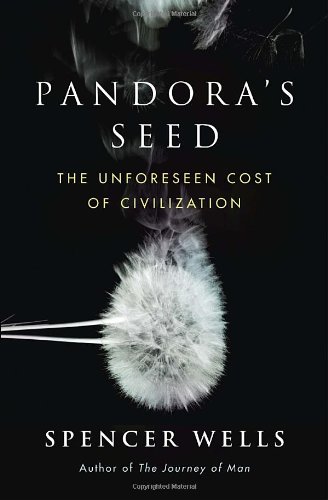Spencer Wells is not a stereotypical scientist. A big man with rugged features and chin stubble that looks as if it’s been sun-dried for a week in a desert wind, he looks the anti- thesis of the etiolated laboratory worker in a white coat.
 Pandora’s Seed: ...
Best Price: $1.25
Buy New $7.38
(as of 01:05 UTC - Details)
Pandora’s Seed: ...
Best Price: $1.25
Buy New $7.38
(as of 01:05 UTC - Details)
In fact, although his day job is in human genetics, Wells is also the National Geographic’s explorer-in-residence – which must be one of the most enviable, if baffling, job titles. Being an explorer for an organisation renowned for its adventurous streak is probably most people’s idea of a dream job, but can it really be done "in residence"?
Wells laughs out loud when asked what it’s all about. "It’s a great title isn’t it, but somewhat oxymoronic," he says. All that it means, he insists, is that he has a long-term relationship with National Geographic centred around its Genographic Project – which attempts to document the long migratory history of our early ancestors by analysing the genetic make-up of people living today.
Wells, once the director of the Population Genetics Research Group at Oxford University and now a visiting professor at Cornell University, is the scientific front man of the Genographic Project. For the past five years, the project has collected thousands of DNA samples from indigenous tribes around the world in an attempt to study the flow of genes and people from one part of the globe to another. "I said we needed to sample the world’s DNA properly, to sample the world’s genetic diversity, and that became the Genographic Project. So we are using DNA as a tool to track ancient human migrations," he says. Anyone with an interest in their evolutionary history can participate in the project, providing they are willing to pay the $100 (£68) for the home sampling kit, which comprises two small tubes to collect the cheek cells rubbed off in the inside of the mouth with the help of a couple of sterile rubbing sticks.
 Deep Ancestry: Inside ...
Best Price: $1.10
Buy New $6.20
(as of 02:25 UTC - Details)
Deep Ancestry: Inside ...
Best Price: $1.10
Buy New $6.20
(as of 02:25 UTC - Details)
The Genographic Project emerged from an idea Wells developed following the disintegration of an earlier study called the Human Diversity Project, which fell apart acrimoniously following criticisms of it being a neo-colonial attempt to exploit the genetic resources of indigenous peoples.
 The Journey of Man: A ...
Best Price: $0.75
Buy New $8.95
(as of 11:00 UTC - Details)
The Journey of Man: A ...
Best Price: $0.75
Buy New $8.95
(as of 11:00 UTC - Details)
The earlier project was the brainchild of Wells’ post-doctoral supervisor, the population biologist Luigi Luca Cavalli-Sforza, who believed it was imperative to collect and store DNA samples from the many indigenous tribes in the world before they disappear though the combined forces of disease, enforced migrations and intermarriage. But some indigenous groups took great exception to what they saw as an attempt to raid their genetic resources. Even today, some tribes, such as the North American Navajo Nation, have a blanket ban on such genetic sampling, believing it does nothing to help their plight. "They are afraid of the consequences, afraid of being exploited. We’ve made contact with them and offered to make an ethical protocol, but nothing has really happened, unfortunately," Wells says.
Meanwhile, the Genographic Project is having more success with other indigenous groups, reassuring participants that the goal is to understand their own ancestral origins. "It’s certainly learning from past mistakes, particularly how you work with indigenous and traditional peoples. That’s what ultimately killed the Human Diversity Project," says Wells. All the DNA samples collected for the Genographic Project are held anonymously and the genetic analysis looks only at portions of the genome that tell of gross relationships between groups of people, rather than anything more specific to do with family relationships or medical problems.
"It’s like entering into a contract. You agree to look at certain genetic markers and not look at others. The indigenous people are aware of all this, and they understand the work that’s being done," Wells explains. The project has collected some 55,000 DNA samples from indigenous people, and is on track to hit 70,000 by the end of next year, when the first phase of the £25m project finishes. This is nevertheless some 30,000 samples short of the original target of 100,000 samples.
June 17, 2010





